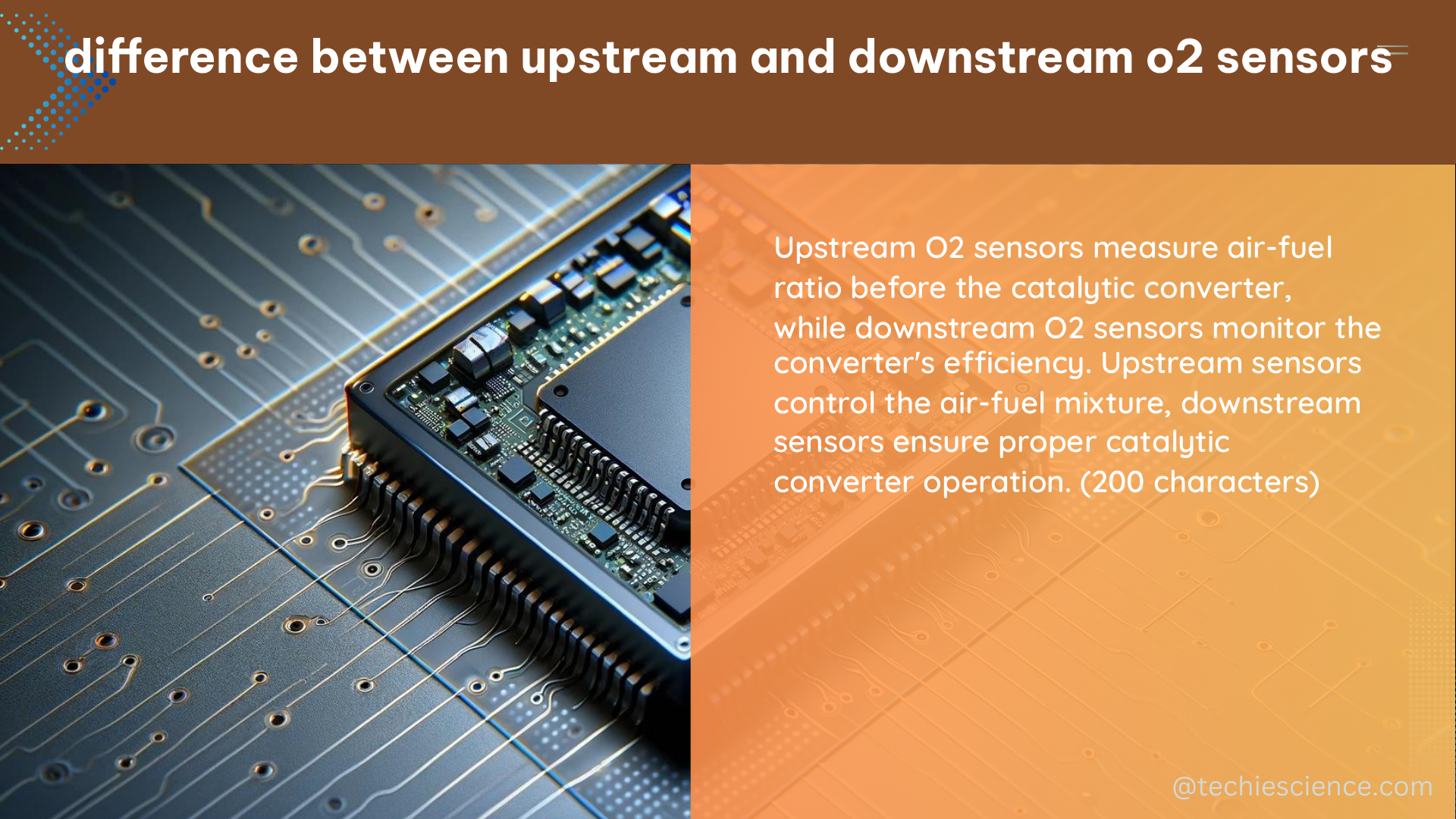The primary difference between upstream and downstream O2 sensors lies in their location and function within the vehicle’s exhaust system. Upstream sensors are positioned before the catalytic converter, while downstream sensors are situated after the converter. This strategic placement allows them to serve distinct purposes in monitoring and optimizing engine performance and emissions.
Location and Positioning
-
Upstream O2 Sensor: This sensor is typically located in the exhaust manifold or close to it, before the catalytic converter. Its proximity to the engine allows it to quickly detect changes in the air-fuel ratio, providing real-time feedback to the engine control unit (ECU).
-
Downstream O2 Sensor: The downstream O2 sensor is positioned after the catalytic converter, often in the exhaust pipe. This location allows the sensor to monitor the efficiency of the converter and ensure that the exhaust gases leaving the vehicle meet emissions standards.
Functional Differences

- Upstream O2 Sensor:
- Plays a crucial role in determining the vehicle’s fuel trim, which is the adjustment made by the powertrain control module (PCM) to maintain the correct air-to-fuel ratio in the engine.
- Detects the oxygen content in the exhaust, allowing the computer to adjust the fuel injector pulse width for improved fuel economy and optimal engine performance.
- Provides real-time feedback to the ECU, enabling it to make immediate adjustments to the air-fuel mixture.
- Typical voltage range: 0-1 V, with a switching point around 0.45 V.
-
Response time: Typically less than 100 milliseconds.
-
Downstream O2 Sensor:
- Monitors the oxygen content in the exhaust to measure the efficiency of the catalytic converter.
- Ensures that the gases entering the converter leave with little to no pollutants, protecting the environment and maintaining optimal engine performance.
- Provides feedback to the ECU, which can then adjust the air-fuel mixture or trigger a check engine light if the converter is not functioning properly.
- Typical voltage range: 0.1-0.9 V, with a switching point around 0.45 V.
- Response time: Typically slower than the upstream sensor, around 300-500 milliseconds.
Technical Specifications
- Wiring Length:
- Upstream O2 sensor wiring is generally shorter, as it is located closer to the engine.
-
Downstream O2 sensor wiring is often longer, as it is positioned further away from the engine.
-
Connector Orientation:
- Upstream O2 sensor connectors may have a different orientation compared to downstream sensors to accommodate their respective positions in the exhaust system.
DIY Considerations
When replacing O2 sensors, it is generally recommended to replace them in pairs to ensure consistent operation. For example, if the left upstream sensor is faulty, it’s best to replace the right one as well. Replacing an O2 sensor is not overly complicated, but it’s essential to follow specific instructions for your vehicle’s year, make, and model. If you’re unsure, it’s always best to consult a professional mechanic.
Conclusion
Understanding the differences between upstream and downstream O2 sensors is crucial for maintaining your vehicle’s engine performance and emissions compliance. By knowing their respective locations, functions, and technical specifications, you can better diagnose and address any issues related to these critical components. Whether you’re a DIY enthusiast or seeking professional assistance, this guide provides a comprehensive overview to help you navigate the world of O2 sensors with confidence.
References
- Upstream vs Downstream O2 Sensor – Subaru Forester Owners Forum
- Upstream vs. Downstream O2 Sensor: What’s the Difference?
- Difference between upstream and downstream O2 Sensor – Honda-Tech Forums
- O2 Sensors Difference Between Upstream or Downstream? Oxygen Sensor Explanation – YouTube
- O2 Sensors is it Upstream or Downstream? – YouTube

The lambdageeks.com Core SME Team is a group of experienced subject matter experts from diverse scientific and technical fields including Physics, Chemistry, Technology,Electronics & Electrical Engineering, Automotive, Mechanical Engineering. Our team collaborates to create high-quality, well-researched articles on a wide range of science and technology topics for the lambdageeks.com website.
All Our Senior SME are having more than 7 Years of experience in the respective fields . They are either Working Industry Professionals or assocaited With different Universities. Refer Our Authors Page to get to know About our Core SMEs.